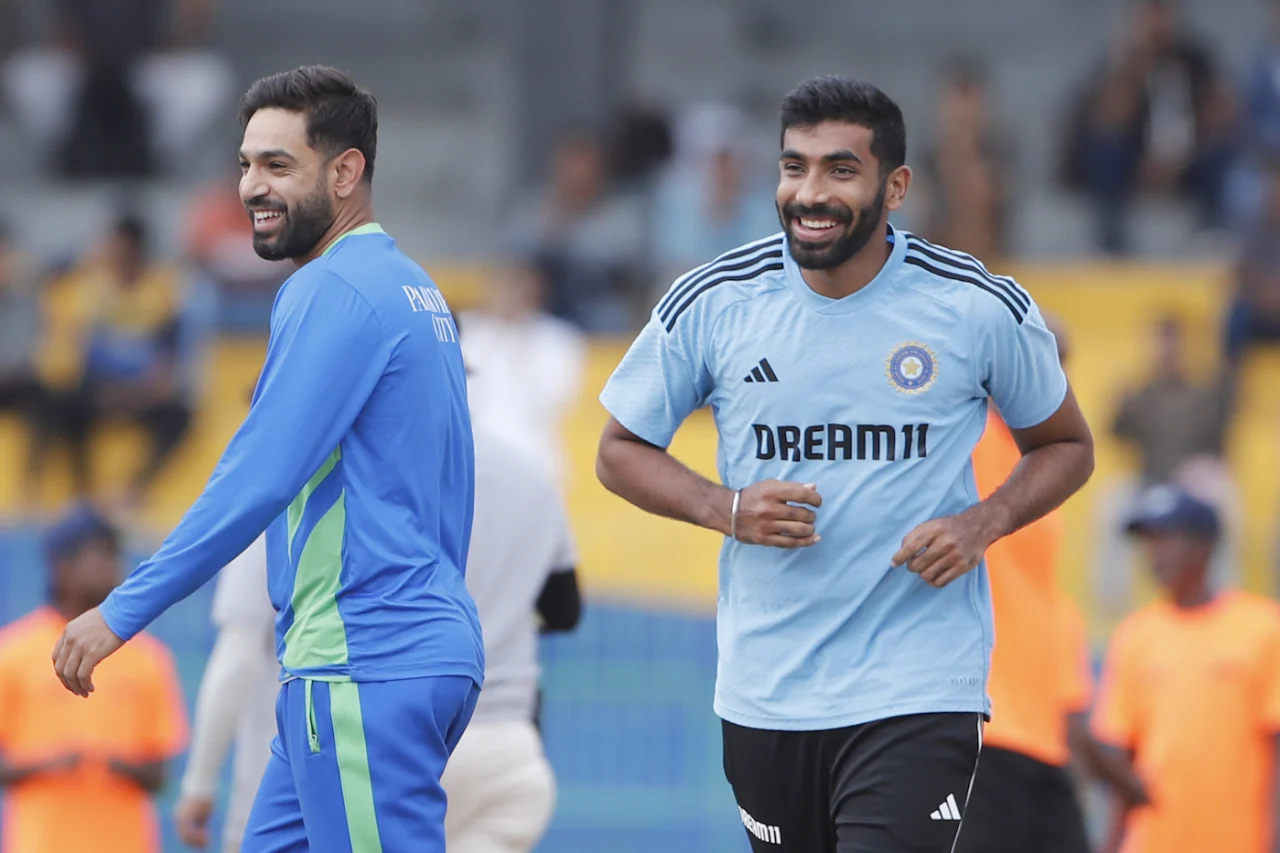Busting ‘spin-to-win in India’ myth: Pace attacks the silent trump cards in bid for World Cup
India has been synonymous with spin-friendly pitches for as long as one can remember, so much so that popular perception has forced the change in trends to slip under the rug. Data suggests the country is no more a paradise for the tweakers and pace will hold the key to success at the World Cup.

The unholy amount of cricket cramped into the calendar in the past years has stripped bilateral cricket of all status and relevance, especially the white-ball games. At least the red-ball internationals carry some context, and despite the advent of the World Test Championship, the likes of Ashes, Border Gavaskar Trophy, and Pataudi Trophy remain the pinnacle. It is also in these games that the pitch conditions are most carefully prepared and thus appear prevalent to the audience, in no small measure due to the sheer length of these fixtures.
It is no surprise then that India has retained the tag of being the spinners’ mecca, given the sandpits that awaited England in their last Test tour of India or the annihilation of Australia by Ravichandran Ashwin in early 2023. Consequently, with the World Cup returning to the nation after 12 years, the focus in the build-up has overwhelmingly been on the spinners. However, the ground reality is starkly different.
In the latest World Cup cycle, that is since the 2019 edition of the tournament, pacers have significantly outperformed their slower counterparts in ODIs in India. The speedsters have averaged 34 in the 27 ODIs in the time period, over eight points better than the corresponding figure for the spinners. In fact, while the average for pacers has improved slightly from the mark of 34.79 in the previous cycle, the spinners experienced an 18% downturn from their average of 36.08 in India between 2015 and 2019.
These numbers are not standalone figures though and simply reflect a global shift in the approach to white-ball cricket, particularly the 50-over format. The revolution brought about by England after the 2015 World Cup which featured gung-ho batting as a focal aspect, combined with the growth of T20s propelling the domination of batters in the sport, has led to an exponential increase in flat pitches around the world. Naturally, India has towed the line as well and the proof is in the pudding. The 2023 season of the Indian Premier League was the highest-scoring edition to date by a huge distance and witnessed 200-plus totals an astonishing 37 times – more than double the previous record of 18 set just the previous year.
This change in the character of the pitches has thus handed the prerogative back to the pacers with the spinners losing leverage. Across all ODIs played since the 2019 World Cup, spinners have averaged over five runs more than the faster bowlers and taken seven more balls to strike on average. However, here’s the surprising part – while the average of 30.14 for pacers is notably lower than the mark in India as expected, the spinners have only averaged 35.39 compared to 42.64 in India in the same time frame.
The previous two editions of the World Cup tell the same story. In England and Wales in 2019, only one spinner (Yuzvendra Chahal) featured in the top 20 wicket takers for the tournament while the 2015 edition held in Australia and New Zealand had Daniel Vettori as the best-ranked spinner at a distant eighth. While these countries have traditionally featured pacer-friendly surfaces, the numbers in these tournaments appear unconventionally skewed. For instance, when England previously hosted an ODI World Cup in 1999, two spinners made it to the top five wicket-takers of the tournament. Similarly, in the 1992 World Cup Down Under, leg-spinner Mushtaq Ahmed finished as the second-highest wicket-taker and two other spinners featured in the top 20.
To make matters worse for the spinners, the pitches at the World Cup would be prepared as per instructions from the global governing body International Cricket Council, who have shown a clear inclination for flat tracks. As per reports, the pitches at Arun Jaitley Stadium in Delhi have substituted the traditional clayey red soil, which offers more grip and turn, for black soil which is much more suited for big scores. The timing of the tournament does not bode well for spinners either, given it is slated to be held immediately after the monsoon season. Fresh pitches are thus inevitable, replete with moisture and a healthy layer of grass on top.
We were told to try and provide a 60-40 pitch conducive to batting.
A curator after meeting with ICC pitch consultant according to Hindustan Times reports
Even the last time the World Cup was held in the subcontinent, two of the top three wicket-takers were pacers, namely Zaheer Khan and Tim Southee. Additionally, the pacers averaged 32.29 in the games played across India compared to the spinners’ average of 34.04. While that gap may appear slim, this was when the pacers only had access to one new ball per inning while spinners made hay in the middle overs with a soft and scuffed-up Kookaburra.
Thus, it is evident that pacers will not only play a big role in the upcoming World Cup but will probably end up determining which way the pendulum swings. And that bodes well for the Men in Blue, who arguably boast the most formidable pace attack of all the 10 teams participating at the marquee event. India is perhaps the only side to have two bowlers equally proficient in all three phases of the game, Jasprit Bumrah and Mohammed Siraj. While the former has scalped eight wickets in five encounters since returning from a long injury layoff and is a proven international commodity, Siraj’s domination of late has been nothing short of sensational.
Since the last World Cup, no one has come close to Siraj’s haul of 32 wickets in the powerplay, taken at a stunning average of 16.91. Between overs 10 and 40, he has been equally impressive, boasting the best average as well as strike rate in the period to go along with his 17 wickets. To cement his superiority, Siraj has also averaged an impressive 16.62 in the death and even more importantly, has the third-best economy among pacers to have bowled at least 100 deliveries in the last 10 overs.
Add to that the fact that Shardul Thakur’s 40 wickets in the middle overs are the most by a pacer across the last four years while Hardik Pandya’s economy of 5.82 in the death overs is unmatched, and India simply look unbeatable in the pace department. Even their backup speedster Mohammed Shami has the fourth-most wickets in the World Cup amongst active players, with 31 scalps at a ridiculous average of 15.7.
Crucially, India is also the only contender that boasts of a full-strength pace attack with adequate preparation heading into the tournament as well as the only team with a pack congruously approaching its prime. Siraj and Bumrah are both just 29 years old while Shami turned 33 less than a month ago. New Zealand’s pace attack, meanwhile, boasts of a 34-year-old Trent Boult, a similarly aged Tim Southee who is unavailable for the start of the tournament due to injury, and a horrendously out-of-form Lockie Ferguson averaging 60 in ODIs in 2023. Australia will have to contend with a Mitchell Starc who’s lacking game time, and England will be without Jofra Archer who was instrumental in their 2019 triumph. South Africa will be missing two premium speedsters Anrich Nortje and Sisanda Magala due to injury as will Pakistan in the form of Naseem Shah.
All the stars are thus aligned for India’s speedsters to take the World Cup by storm and barring any big-event jitters, their sheer comprehensiveness should be enough to drive the Men in Blue to a third World Cup triumph.

Comments
Sign up or log in to your account to leave comments and reactions
0 Comments